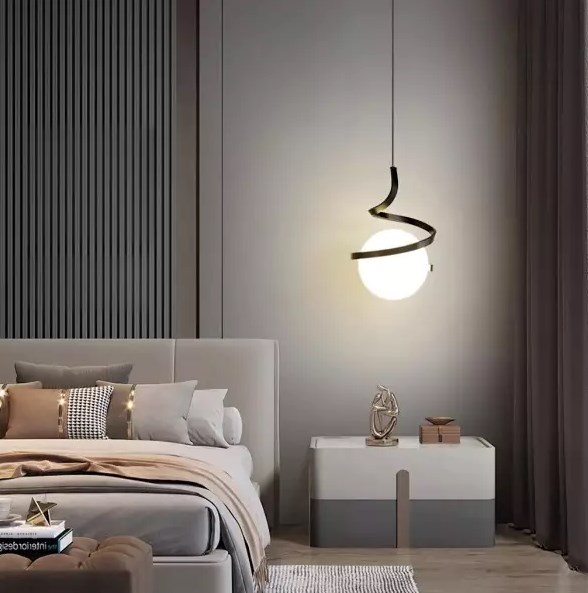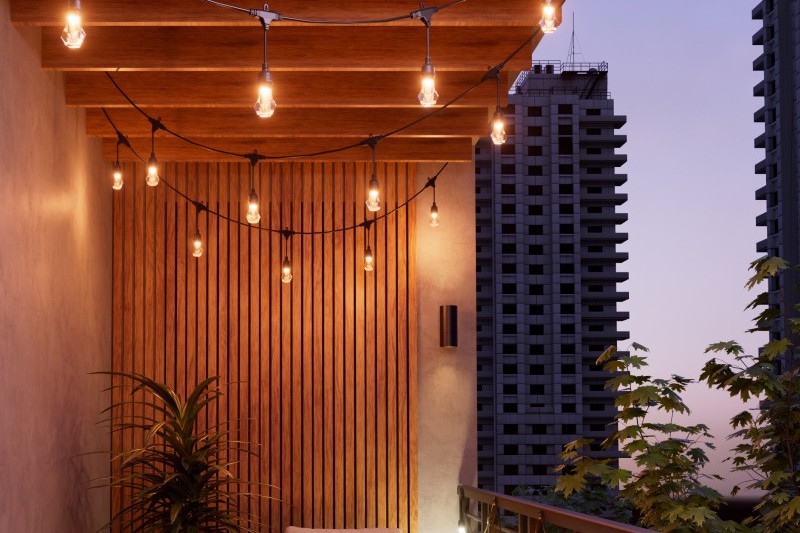When it comes to home decor, lighting plays a crucial role in creating the overall look and feel of a room. The right lighting can enhance the ambiance and mood of a space, making it more inviting and comfortable. Decorative lighting, in particular, adds an extra layer of style and personality to any room. Whether it’s a statement chandelier in the dining room or a sleek pendant light in the kitchen, decorative lighting can truly transform a space.
The impact of lighting on the overall look and feel of a room cannot be overstated. It has the power to make a room feel warm and cozy or bright and energetic. The right lighting can highlight architectural features, artwork, and furniture, while also providing functional illumination for everyday tasks. Without proper lighting, even the most beautifully designed room can feel dull and lifeless.
The Evolution of Decorative Lighting: From Traditional to Modern Styles
Decorative lighting has come a long way over the years, evolving from traditional styles to more modern and contemporary designs. In the past, decorative lighting was often ornate and elaborate, with intricate details and embellishments. Chandeliers were a popular choice for grand homes and palaces, adding a touch of luxury and opulence to any space.
However, as design trends shifted towards minimalism and simplicity, decorative lighting also underwent a transformation. Modern styles emerged, characterized by clean lines, geometric shapes, and sleek finishes. These contemporary designs embraced simplicity and functionality, while still making a statement in any room.
Modern Decorative Lighting Trends: Minimalism, Geometric Shapes, and More
In today’s interior design woodenlightings landscape, modern decorative lighting is all about minimalism and simplicity. Clean lines, geometric shapes, and neutral colors are key elements of this style. Pendant lights with simple silhouettes are particularly popular, as they add a touch of elegance and sophistication to any space.
Another trend in modern decorative lighting is the use of natural materials. Wood, bamboo, and rattan are commonly used to create lighting fixtures that bring a sense of warmth and organic beauty to a room. These natural materials add texture and visual interest, while also creating a cozy and inviting atmosphere.
Choosing the Right Type of Lighting: Ambient, Task, and Accent Lighting
When it comes to choosing the right type of lighting for your home, it’s important to consider the specific purpose of each room. Different types of lighting serve different functions, and understanding these distinctions can help you create a well-lit and functional space.
Ambient lighting provides overall illumination for a room, ensuring that it is well-lit and comfortable. This can be achieved through ceiling lights, chandeliers, or recessed lighting. Task lighting, on the other hand, is focused on specific areas where activities such as reading or cooking take place. This can be achieved through desk lamps, under-cabinet lighting, or pendant lights.
Accent lighting is used to highlight specific features or objects in a room, such as artwork or architectural details. This can be achieved through spotlights, track lighting, or wall sconces. By combining these different types of lighting, you can create a layered and dynamic lighting scheme that enhances the functionality and aesthetics of your space.
The Role of Color in Decorative Lighting: Creating a Mood and Atmosphere
Color plays a crucial role in creating the mood and atmosphere of a room. Different colors evoke different emotions and can have a significant impact on how we feel in a space. When it comes to decorative lighting, color can be used to create a specific ambiance and enhance the overall design scheme.
Warm colors such as reds, oranges, and yellows create a cozy and inviting atmosphere. These colors are often used in decorative lighting fixtures to add warmth and comfort to a room. Cool colors such as blues, greens, and purples, on the other hand, create a calm and serene atmosphere. These colors are often used in decorative lighting fixtures to create a sense of tranquility and relaxation.
In addition to warm and cool colors, neutral colors such as whites, grays, and browns are also commonly used in decorative lighting. These colors provide a clean and timeless look that can complement any decor style. By carefully selecting the color of your decorative lighting fixtures, you can create a cohesive and harmonious design scheme that enhances the overall look and feel of your space.
Materials and Finishes: From Glass to Metal, Choosing the Right Material for Your Decorative Lighting

The choice of materials and finishes for decorative lighting fixtures is an important consideration when it comes to creating a cohesive and stylish look. Different materials can evoke different moods and aesthetics, so it’s important to choose the right material that complements your decor style.
Glass is a popular choice for decorative lighting fixtures as it adds a touch of elegance and sophistication to any space. Whether it’s a crystal chandelier or a sleek glass pendant light, glass fixtures can create a sense of luxury and opulence. Metal is another commonly used material for decorative lighting fixtures. From brass to copper to stainless steel, metal fixtures can add a modern and industrial touch to any room.
Other materials such as wood, bamboo, and rattan are also commonly used in decorative lighting fixtures. These natural materials add warmth and texture to a space, creating a cozy and inviting atmosphere. By choosing the right material for your decorative lighting fixtures, you can enhance the overall look and feel of your space and create a cohesive design scheme.
Placement and Installation: How to Position Your Decorative Lighting for Maximum Impact
Proper placement and installation of decorative lighting fixtures are crucial for creating maximum impact in your space. The right placement can highlight architectural features, artwork, and furniture, while also providing functional illumination for everyday tasks.
When it comes to chandeliers and pendant lights, the height at which they are hung is important. In dining rooms, chandeliers should be hung low enough to create a sense of intimacy and to provide adequate lighting for the table. In entryways and foyers, chandeliers should be hung high enough to create a grand and welcoming entrance.
For wall sconces and other accent lighting fixtures, the placement should be determined by the specific feature or object you want to highlight. Wall sconces can be used to frame a mirror or artwork, while spotlights can be used to highlight architectural details or sculptures. By carefully considering the placement of your decorative lighting fixtures, you can create a well-lit and visually appealing space.
Smart Lighting: The Latest Technology for Modern Decorative Lighting
Smart lighting is the latest technology in modern home decor, offering a range of benefits and features that enhance the functionality and aesthetics of your space. Smart lighting allows you to control your lights remotely using a smartphone or voice commands, giving you complete control over the ambiance and mood of your space.
One of the main benefits of smart lighting is its energy efficiency. Smart bulbs use LED technology, which is more energy-efficient than traditional incandescent bulbs. This not only helps reduce your energy consumption but also saves you money on your electricity bills.
Another benefit of smart lighting is its versatility. With smart bulbs, you can easily change the color and intensity of your lights to create different moods and atmospheres. Whether you want a bright and energetic space for entertaining or a soft and relaxing ambiance for winding down, smart lighting allows you to easily customize your lighting scheme.
DIY Decorative Lighting: Creative and Budget-Friendly Ideas for Your Home
If you’re looking for creative and budget-friendly ideas for decorative lighting, DIY projects are a great option. DIY decorative lighting allows you to create unique and personalized lighting fixtures that reflect your style and personality.
One popular DIY project is creating your own pendant lights using mason jars or other glass containers. Simply drill a hole in the lid of the jar, insert a light socket, and hang it from the ceiling using a cord or chain. This simple project can add a touch of rustic charm to any space.
Another DIY project is creating your own wall sconces using reclaimed wood or metal pipes. Simply attach a light socket to the wood or pipe, and mount it on the wall using brackets or hooks. This industrial-inspired project can add a unique and stylish touch to any room.
The Benefits of Modern Decorative Lighting for Your Home Decor
In conclusion, modern decorative lighting plays a crucial role in enhancing your home decor. It has the power to transform a space, creating a warm and inviting atmosphere that reflects your style and personality. From traditional to modern styles, decorative lighting has evolved over the years, embracing simplicity and functionality.
By choosing the right type of lighting, considering the role of color, selecting the right materials and finishes, and properly placing and installing your decorative lighting fixtures, you can create a well-lit and visually appealing space that enhances your overall home decor.
Whether you choose to invest in high-quality decorative lighting fixtures or embark on a DIY project, the benefits of modern decorative lighting are undeniable. It not only enhances the functionality and aesthetics of your space but also adds an extra layer of style and personality. So don’t underestimate the power of decorative lighting in transforming your home decor.





